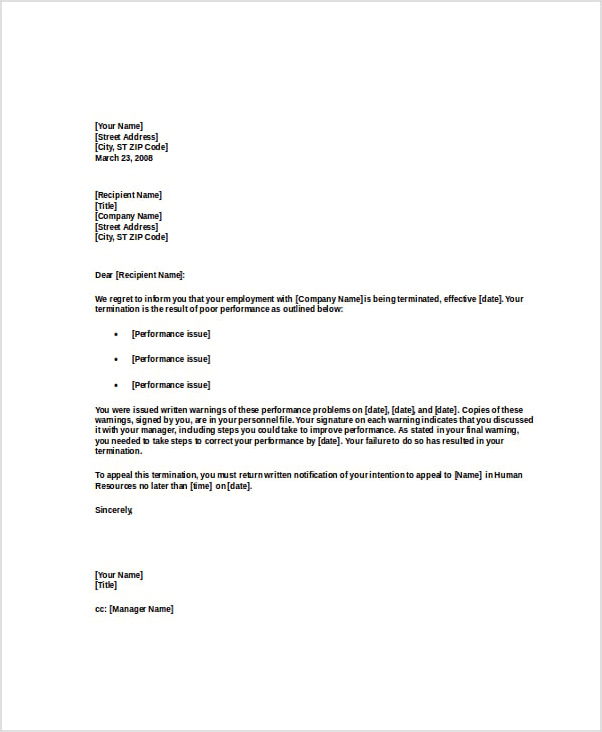Terminating an employee due to poor performance is never an easy task. It requires careful consideration, documentation, and communication to ensure a fair and legally compliant process. One crucial aspect of this process is the poor performance termination letter. This article will guide you through the essentials of writing an effective termination letter that addresses poor performance formally and professionally.
What is a poor performance termination letter?
A poor performance termination letter is a formal document sent by an employer to an employee whose work performance has consistently fallen below expectations. It outlines the reasons for termination, details the employee’s performance issues, and explains the decision to terminate their employment. This letter serves as a record of the termination and provides the employee with a clear understanding of the reasons for their dismissal.
Why do you need a poor performance termination letter?
A poor performance termination letter is essential for several reasons:
- Legal Protection: A termination letter provides evidence that the employee was informed of the reasons for their dismissal, which can help protect the employer from potential legal disputes.
- Clarity and Transparency: The letter ensures that the employee understands why their performance was deemed unsatisfactory and why termination was necessary.
- Consistency: Having a standardized termination process, including a termination letter, helps maintain consistency across the organization and ensures fairness in handling poor performance cases.
When should you use a poor performance termination letter?
A poor performance termination letter should be used when an employee’s performance consistently falls below expectations despite efforts to address the issue through performance improvement plans, feedback, and coaching. It should be the final step in a progressive disciplinary process, following verbal and written warnings.
It is crucial to exhaust all avenues for improvement before resorting to termination, as it is in the best interest of both the employee and the organization to resolve performance issues whenever possible.
What to include in a poor performance termination letter?
When writing a poor performance termination letter, it is important to include the following key elements:
- Date and Employee Information: Begin the letter with the date and the employee’s name, job title, and department.
- Introduction: Clearly state that the purpose of the letter is to terminate the employee’s employment due to poor performance.
- Summary of Performance Issues: Provide a concise summary of the employee’s performance issues, including specific examples and instances where expectations were not met.
- Previous Discussions and Warnings: Mention any previous discussions, performance improvement plans, or warnings given to the employee regarding their performance.
- Impact on the Organization: Explain how the employee’s poor performance has affected the organization, such as decreased productivity, missed deadlines, or negative impact on team morale.
- Termination Details: Clearly state the effective date of termination and any additional information relevant to the employee’s departure, such as the return of company property or final paycheck details.
- Supportive Resources: Offer information about any available resources or assistance programs that may help the employee transition to new employment.
- Contact Information: Provide contact information for the HR department or a designated individual who can address any questions or concerns the employee may have.
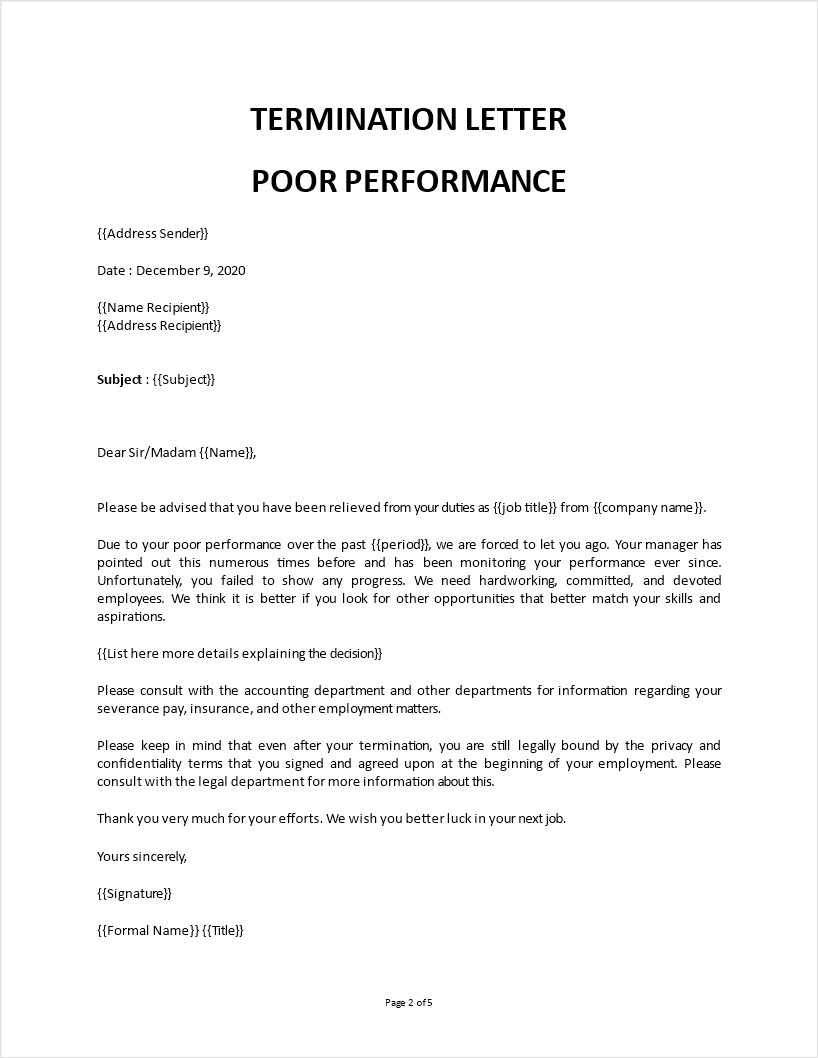
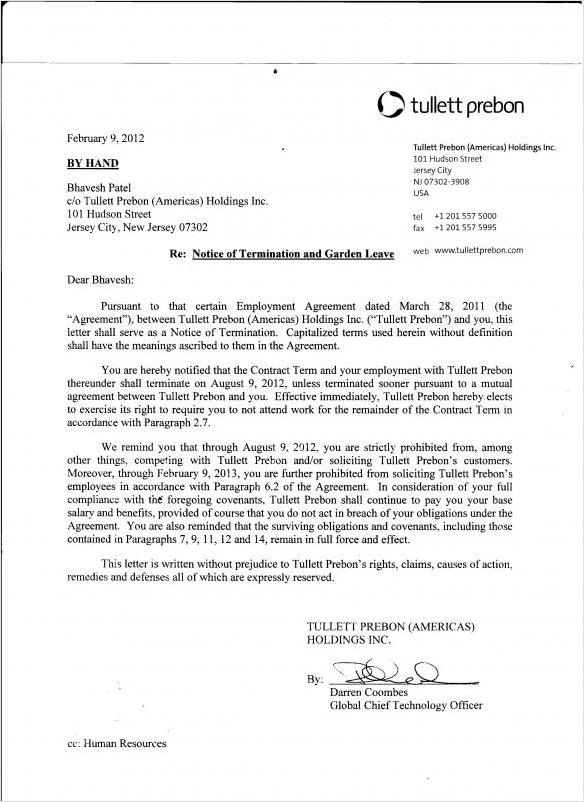
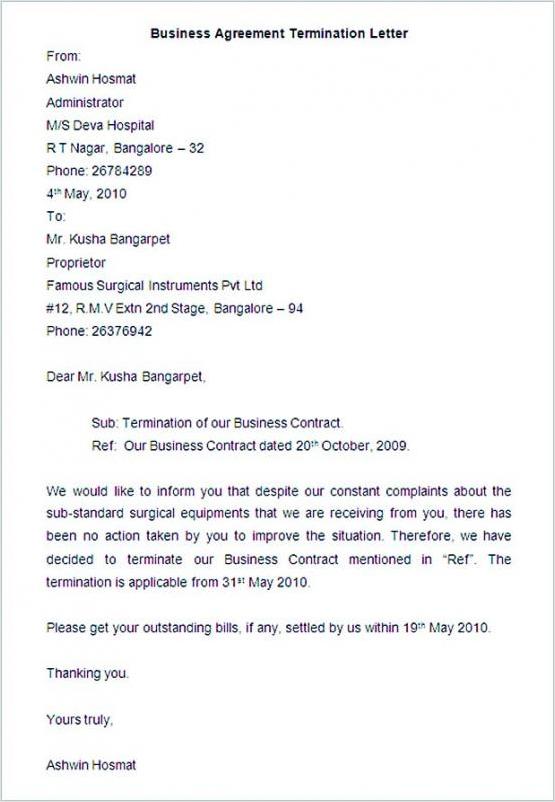
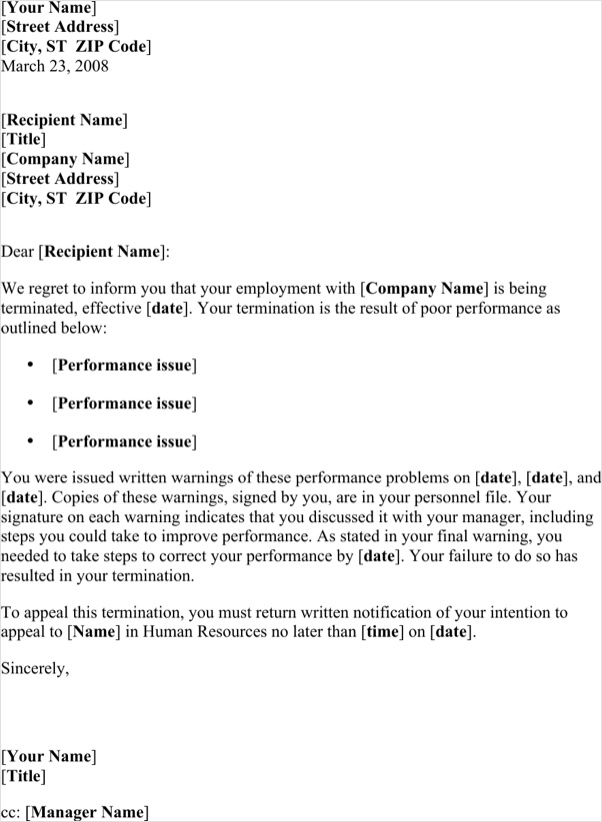
How to write a poor performance termination letter?
Writing a poor performance termination letter requires a delicate balance of professionalism, empathy, and clarity. Here are some tips to help you write an effective letter:
- Be Clear and Specific: Clearly state the reasons for termination and provide specific examples of the employee’s performance shortcomings.
- Remain Professional: Use a formal tone throughout the letter and avoid personal attacks or emotional language.
- Show Empathy: Acknowledge the difficulty of the situation and express empathy towards the employee, while still maintaining the need for termination.
- Offer Support: Provide information about resources or assistance programs that can help the employee during their transition period.
- Keep it Concise: While it is important to provide necessary details, keep the letter concise and to the point.
- Proofread and Edit: Review the letter for grammar and spelling errors, ensuring it reflects the professionalism of your organization.
Remember, a poor performance termination letter is a formal document that should be treated with the utmost care and professionalism. By following the guidelines outlined in this article, you can ensure that your termination letter effectively communicates the reasons for termination while maintaining respect and fairness for all parties involved.
Poor Performance Termination Letter Template Word – Download
